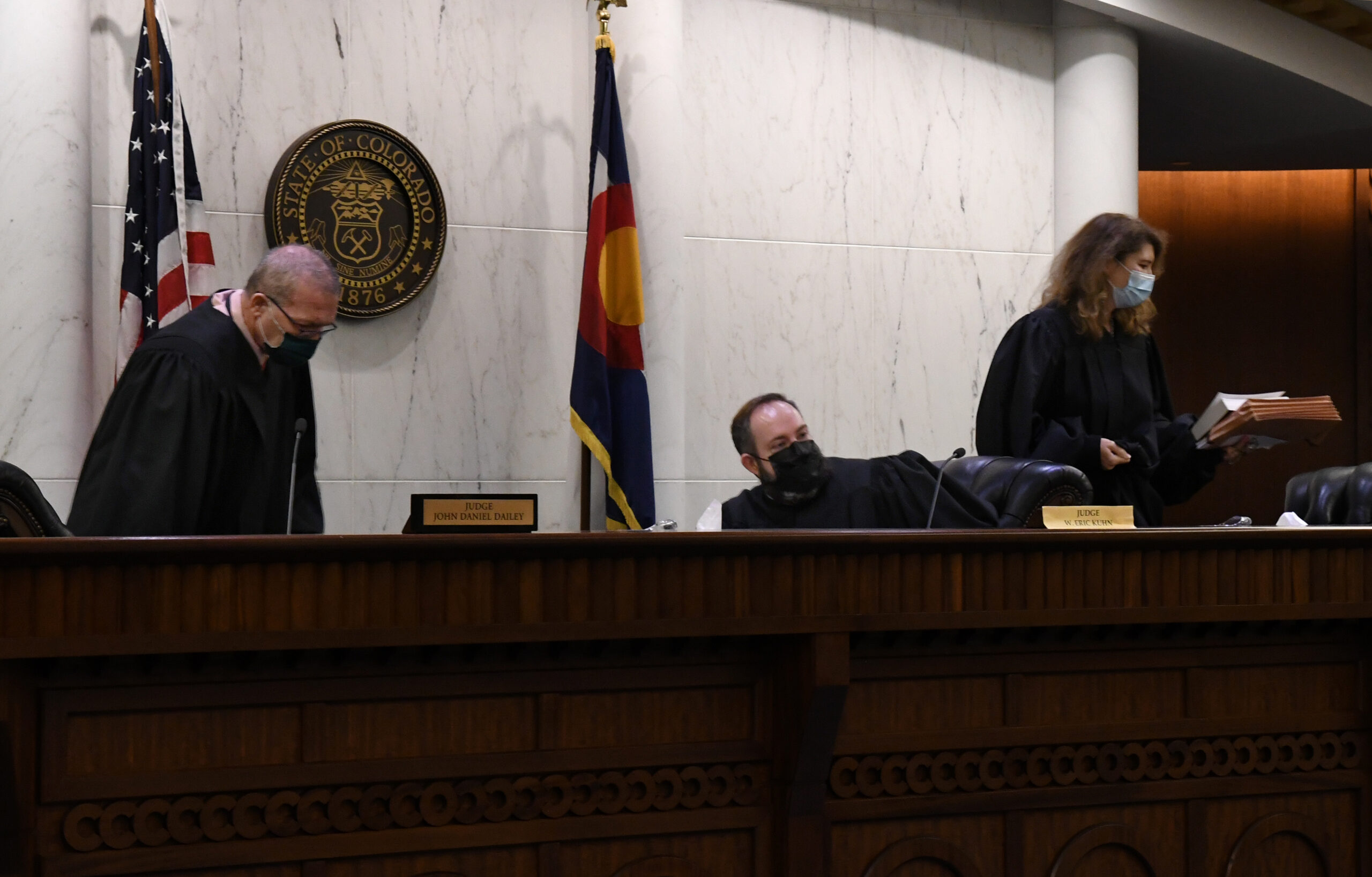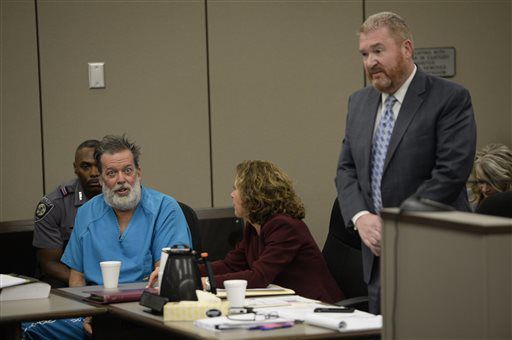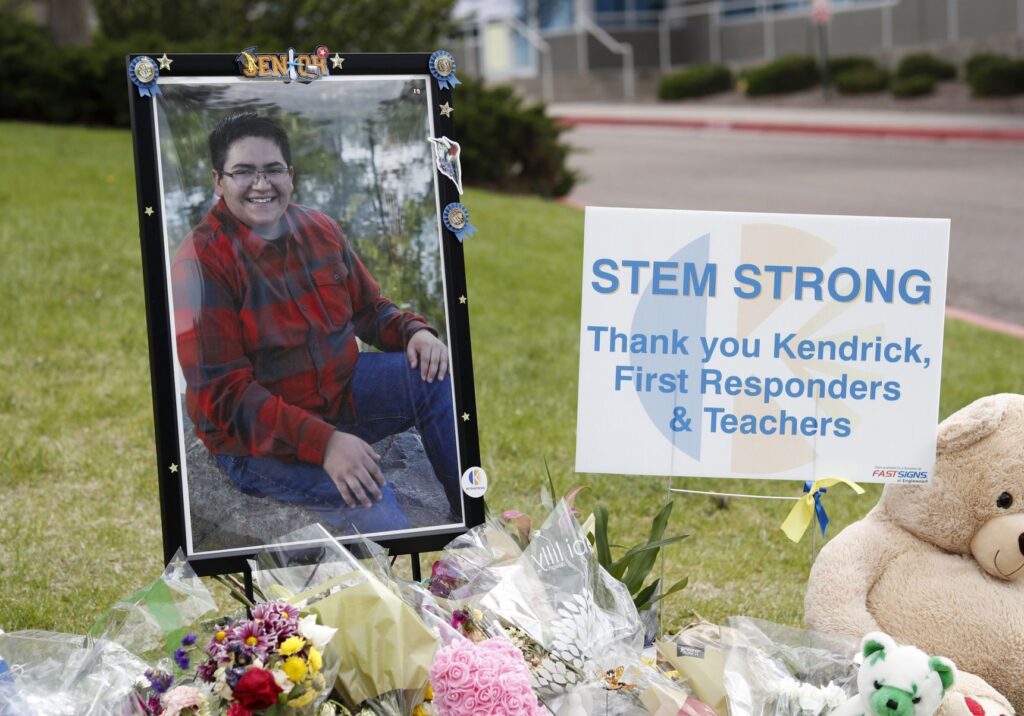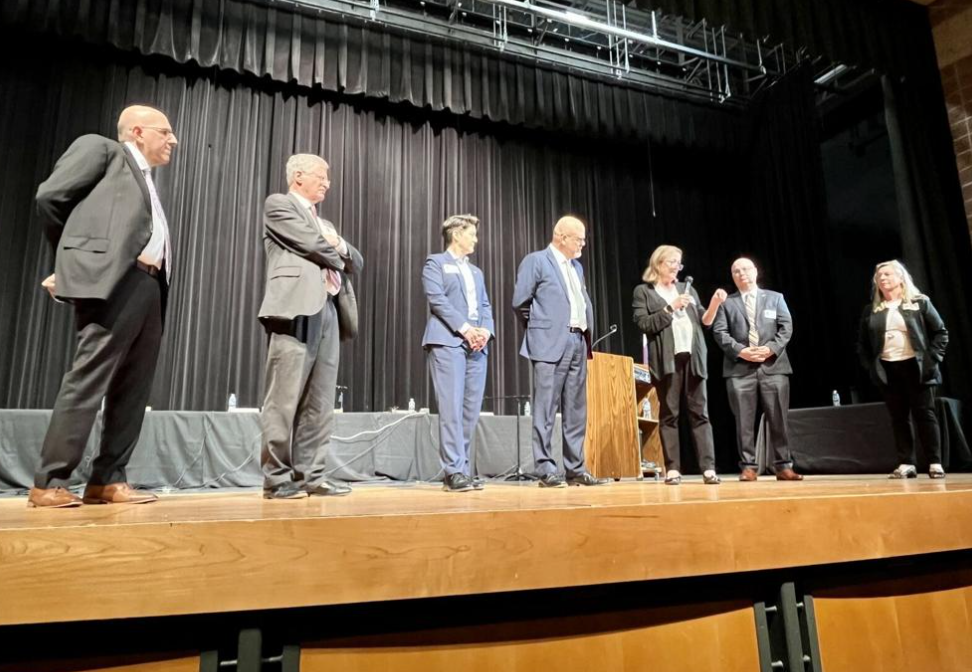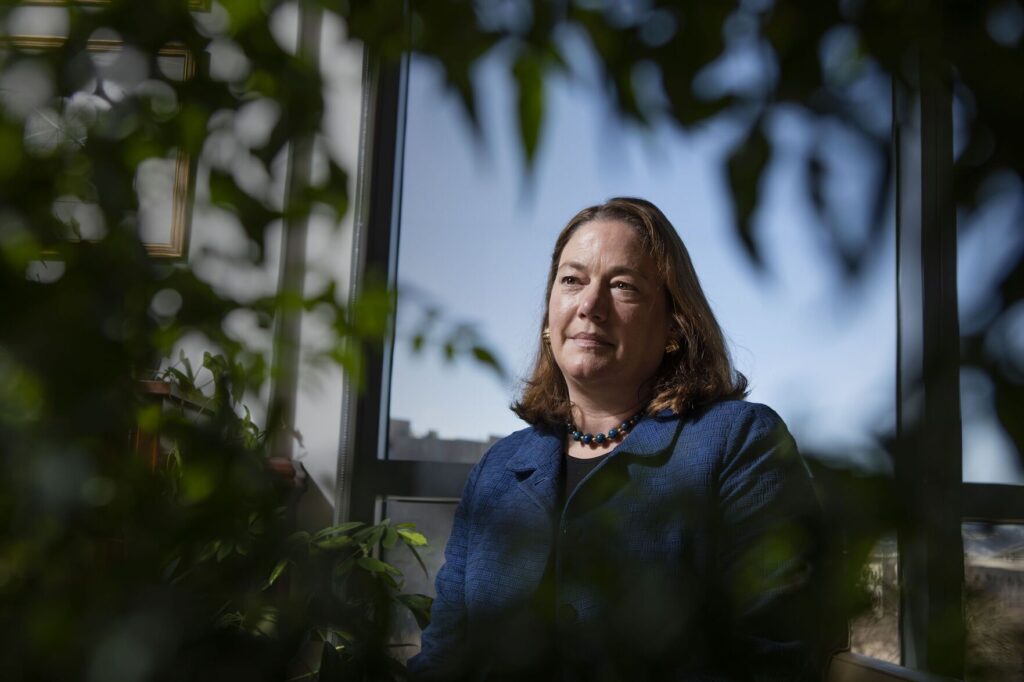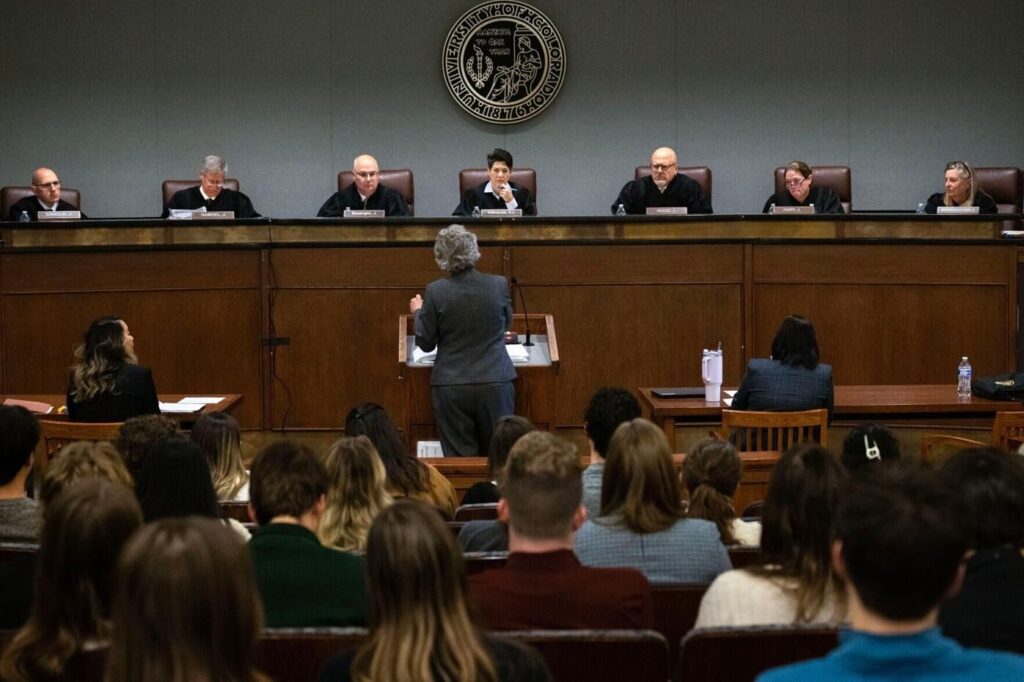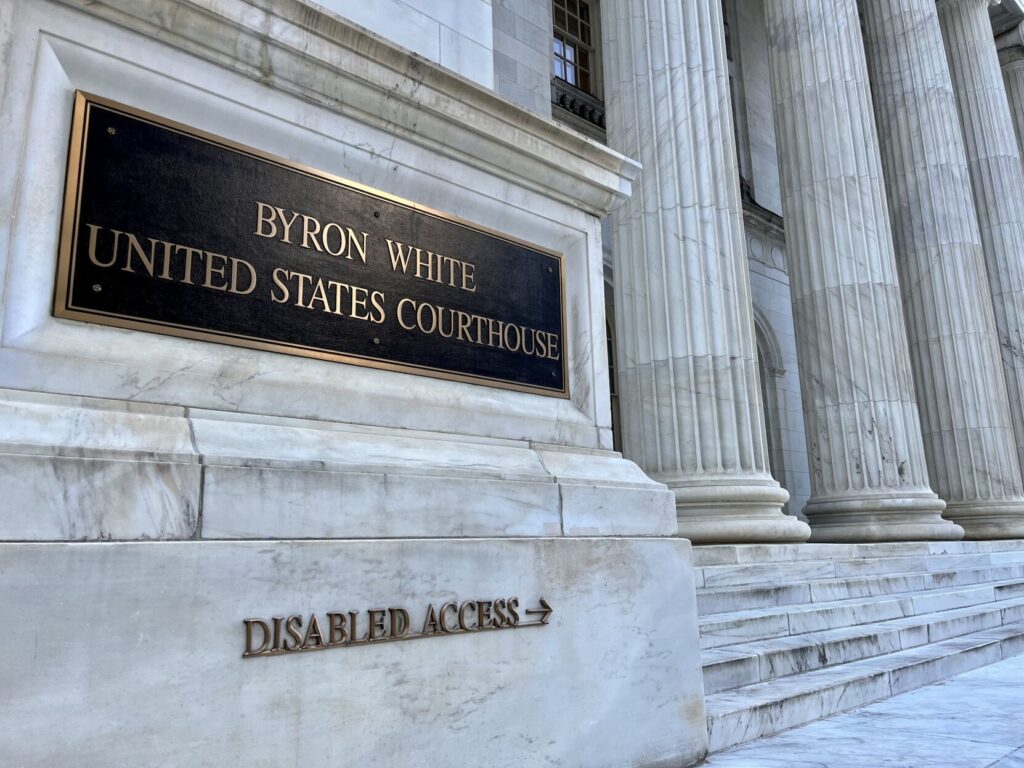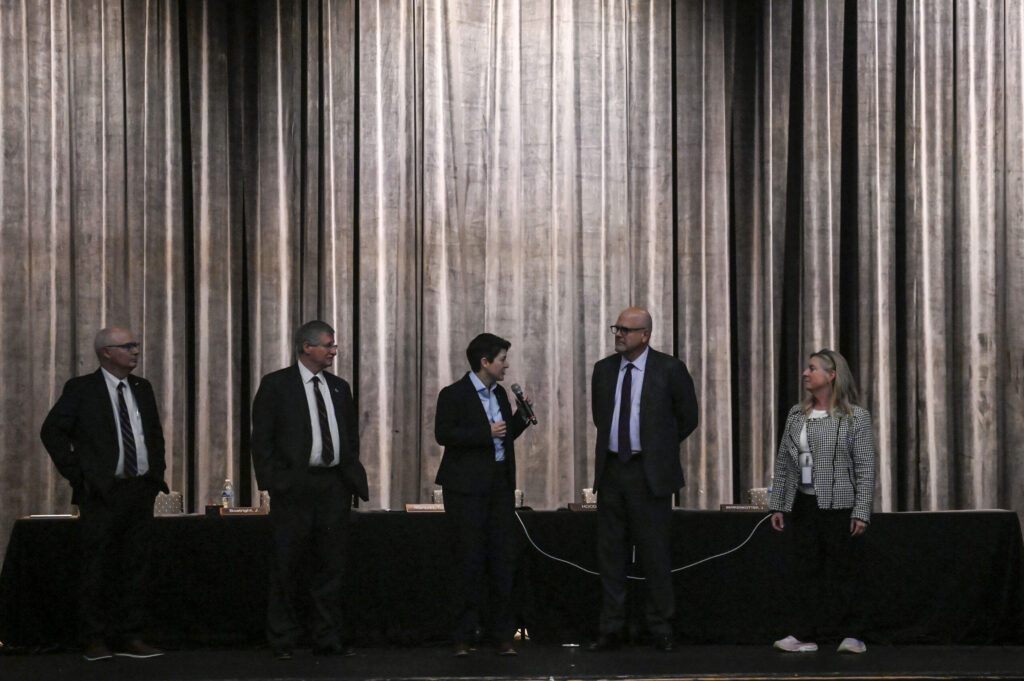White, male lawyers dominate oral arguments before Colorado’s appellate courts | COVER STORY
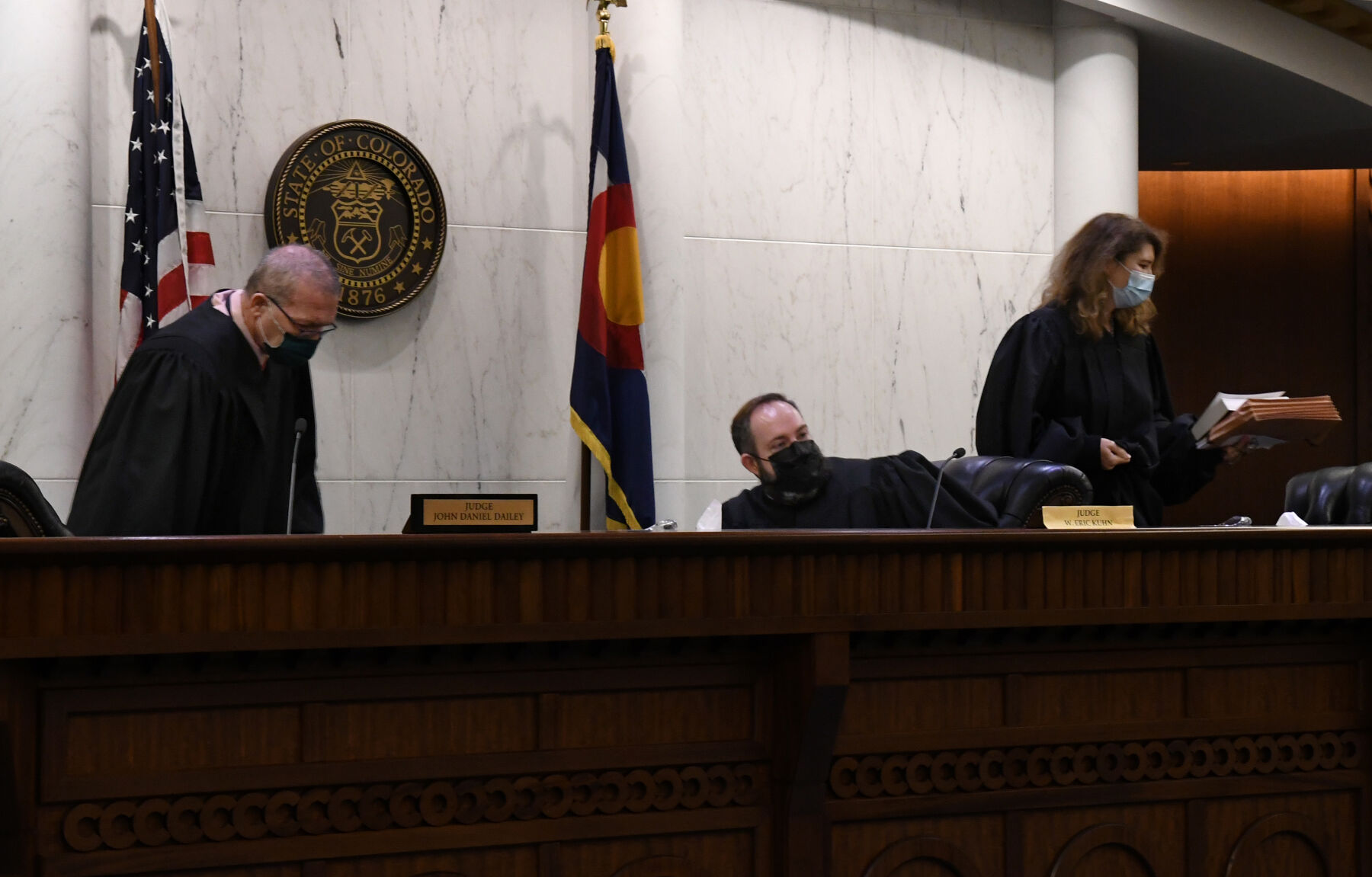
When Colorado’s chief justice appeared before the legislature in early January, he boasted about the progress in diversifying the state’s bench, thanks to a variety of initiatives meant to bring more women and lawyers of color into judgeships.
Chief Justice Brian D. Boatright illustrated the transformation by recalling a judicial conference in late 2022, the first in-person gathering since the COVID-19 pandemic.
“The room looked and felt different. We saw more women and more diverse colleagues among us,” he said. “Diverse law students entering the legal profession have shared with us how inspiring it is to see judges who look like them.”
However, when judges are looking back at the lawyers arguing before them, they are not necessarily seeing the same thing.
Colorado Politics analyzed the race and gender of all lawyers who participated in oral arguments during 2022 in the state’s Supreme Court and Court of Appeals. A total of 85 attorneys argued before the Supreme Court, while 657 argued to the Court of Appeals.

In each venue, white and male attorneys dominated. Ninety-four percent of those who argued before the Supreme Court appeared to be white and 67% were men. For the Court of Appeals, white attorneys were 91% and men were 65% of those making arguments.
“It means that the legal profession is behind in taking the steps needed to promote our profession to resemble society,” said Jeffrey M. Kane, who argued a civil case before the Court of Appeals last year. “The fact that reporters and the public and our profession are having to ask that question in 2023 tells us that our profession and legal system have a problem that should be addressed with much more urgency than I believe it has been.”
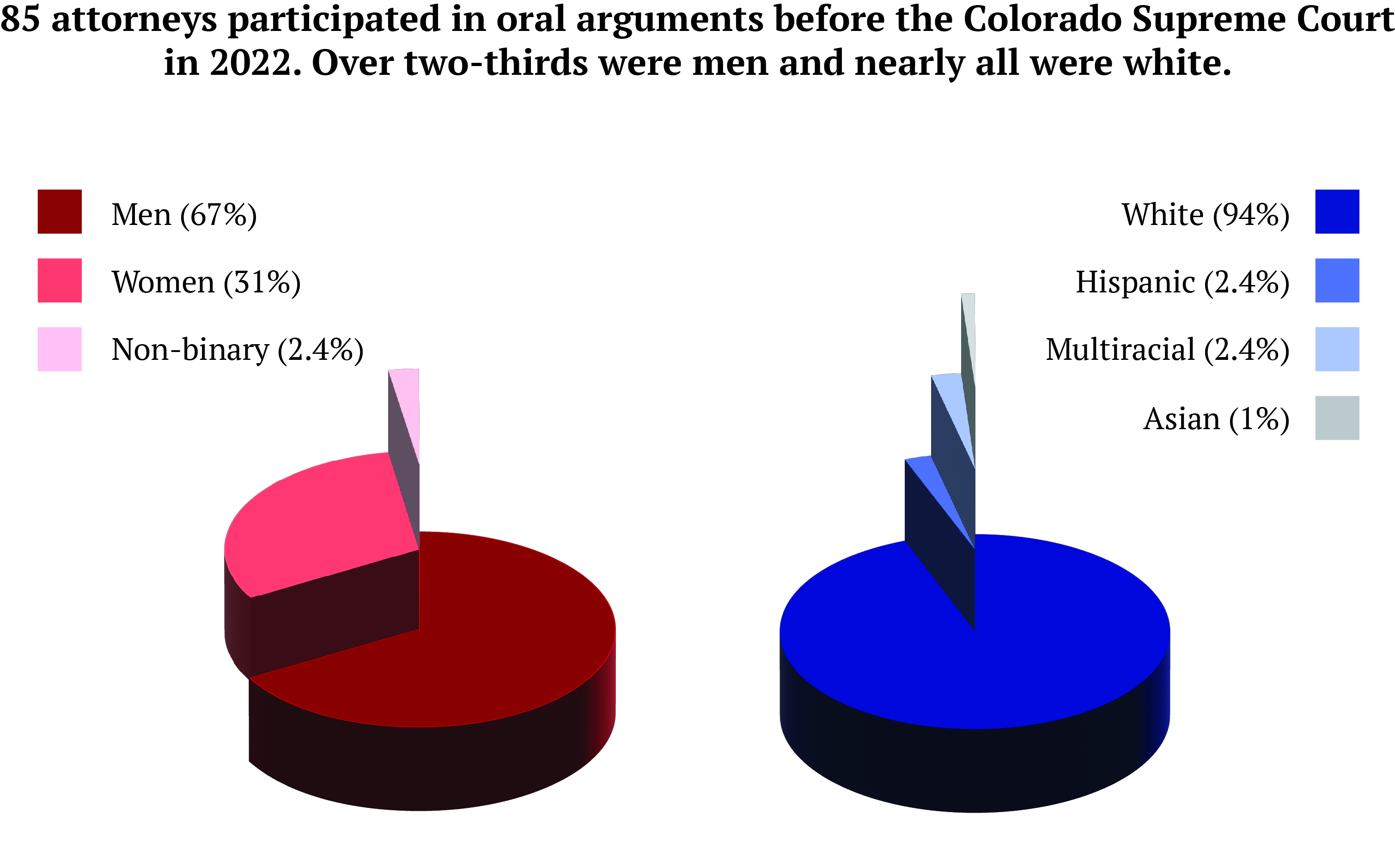
Not all lawyers who spoke to Colorado Politics share that level of concern. Some do not believe the race and gender of those arguing before an appellate court make a difference to the outcome. Others suggested the focus is better placed elsewhere, such as the demographics of the judges hearing an appeal.
“Conventional wisdom is that oral argument plays only a very small part (and usually no part at all) in the outcome of a case,” said Amy K. Hunt, who argued before the Court of Appeals last October.
Still, with the appellate courts collectively deciding roughly 1,700 cases per year, the people who try to persuade judges to adopt their interpretation of the law do not hew to the demographics of Colorado, or the legal profession, as a whole.
The demographic disparity
Last calendar year, the Colorado Supreme Court held oral arguments in 38 cases. Although most of the court’s opinions were issued following oral arguments, the justices also decided certain cases “on the briefs,” using the parties’ written submissions alone.
The Court of Appeals, which is the final decision-maker for the vast majority of appeals, held 312 oral arguments. Each case came before a panel of three judges. Unlike the Supreme Court, oral arguments are a smaller percentage of the intermediate court’s work. The clerk estimated to Colorado Politics that 75-80% of appeals are decided on the briefs.
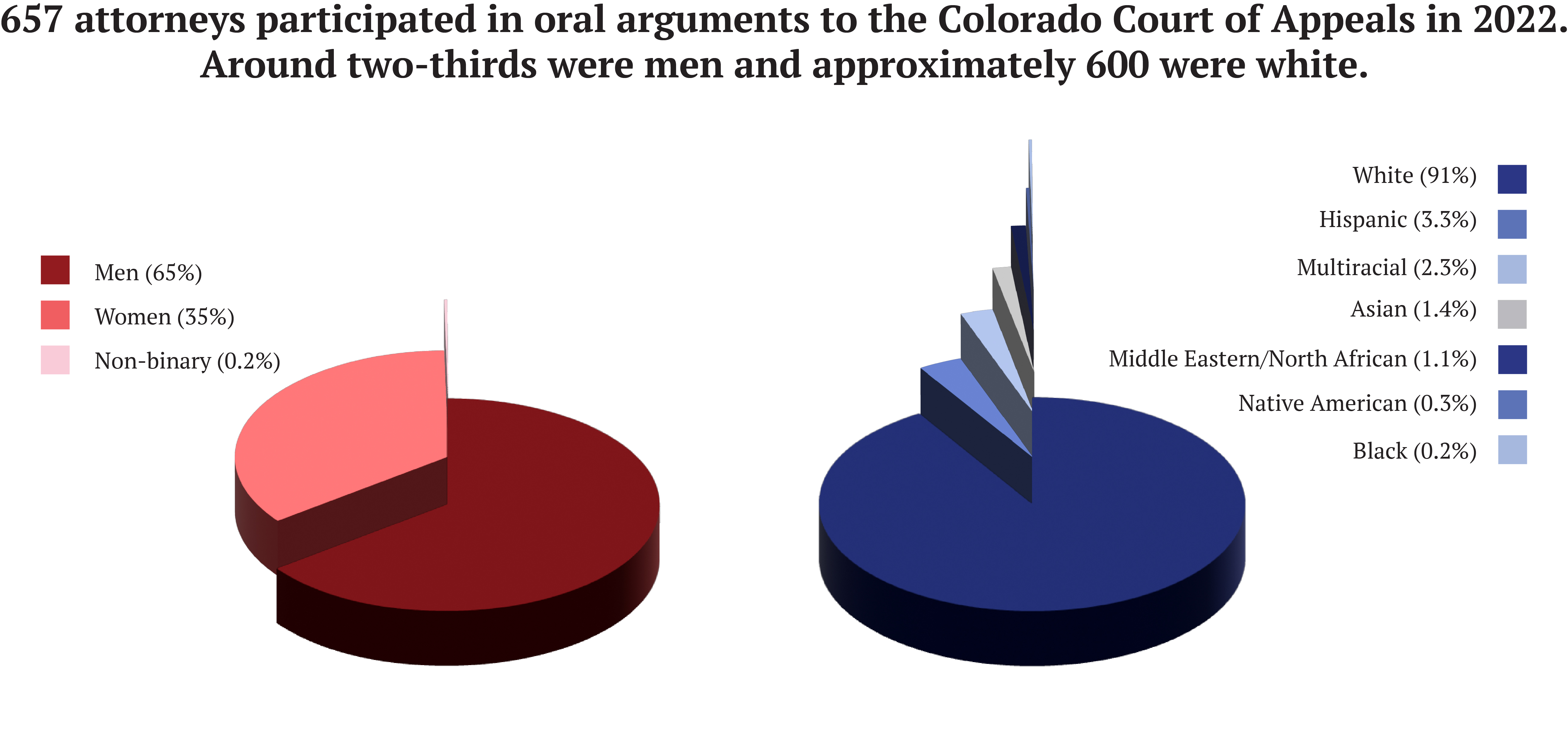
Regardless, the trend is the same for both bodies: White men appeared to constitute the majority of the lawyers participating in oral arguments – at 54 out of 85 Supreme Court attorneys and 393 out of 657 total Court of Appeals attorneys.
Hispanic lawyers constituted only about 3% of those arguing cases, even though Hispanic and Latino people account for 22% of the state’s population. Two percent of lawyers arguing before the Supreme Court identified as two or more races, while 1% were Asian. There appeared to be no Black attorneys who provided arguments to the state’s highest court.
The percentages were very similar for the Court of Appeals, with a small number of attorneys participating who are of Middle Eastern/North African (MENA) descent. In each court, women comprised roughly one-third of those arguing cases, with a total of three lawyers identifying themselves as nonbinary.

Given that the appellate courts interpret the law for all trial judges across the state and, on occasion, prompt the legislature to change the law, some attorneys expressed concern that appellate judges may not be receiving certain details that come from a lawyer’s lived experiences and are communicated through face-to-face argument.
“As a woman of color, my experiences in the world shape the way that I see how the law can impact different clients and I will often tailor my argument so that the court understands that nuance, as well,” said Ruchi Kapoor, who argued multiple child welfare cases to the Court of Appeals. “When the advocates themselves are missing the fundamentals of how a legal decision can impact a community, then that nuance will of course be missed in the opinion.”
The examination of who is making the arguments reflects the broader question of whether demographics, and the personal lived experiences that may derive from those demographics, influence outcomes. Or are outcomes purely about the law, the facts and the strength of the arguments?
Unlike trial judges, the Supreme Court and Court of Appeals almost never interact with parties directly, with information instead funneled through their counsel. Most cases featured just two attorneys, but some had three or even four lawyers presenting arguments. In one unusual Court of Appeals case, the panel of judges heard from just one lawyer, after his opposing counsel’s car got wrecked and she waived her appearance.
Colorado Politics noted the apparent race and gender of each lawyer, then attempted to confirm the attorneys’ demographics directly with them, their law firms or their colleagues. While some attorneys made repeat appearances, many argued only one case each. In total, Colorado Politics confirmed 65% of Supreme Court lawyers’ characteristics and 52% for the Court of Appeals.
A small number of attorneys refused to verify their demographics, asked to be excluded from the dataset or otherwise criticized the need for looking at race and gender.
“It is an asinine, ridiculous question,” wrote James P. Bick Jr., who argued two cases before the Court of Appeals. “Such reporting is a colossal waste of time.”
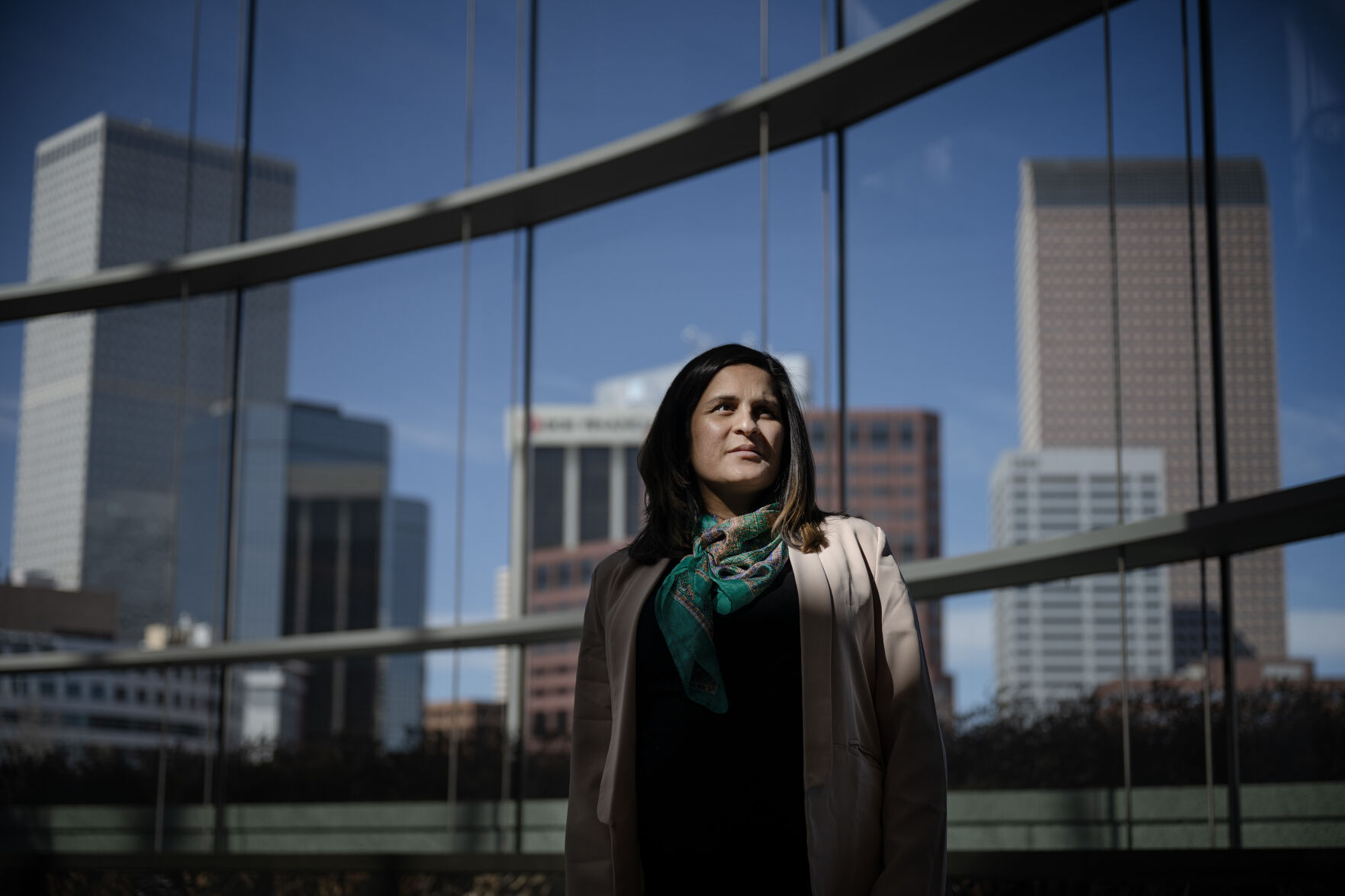
Parallels to SCOTUS
Last fall, Elizabeth Barchas Prelogar, who is only the second woman to be confirmed as the country’s solicitor general, was participating in oral arguments before the U.S. Supreme Court in a case that could end race-conscious admissions at universities.
In doing so, Prelogar raised a concrete illustration when responding to a question about the “meaningful” threshold for diversity.
“The court is going to hear from 27 advocates in this sitting of the oral argument calendar, and two are women,” she said. “And I think it would be reasonable for a woman to look at that and wonder, ‘Is that a path that’s open to me?'”
The Washington Post in October catalogued the racial and gender demographics of the 374 lawyers (also known as advocates) who argued before the nation’s highest court starting with its 2017 term. Three in five were white men, with women comprising only 20%. The percentage of Asian, Hispanic and Black attorneys was in the single digits, as is the case in Colorado.
In contrast, the membership of the Supreme Court itself is more diverse, with four women, two Black members and one Latina. Similarly, Colorado’s appellate courts generally have a higher percentage of women and judges of color than the population of lawyers arguing before them.
Colorado’s judicial, executive and legislative branches have made diversification of the bench a priority, with the General Assembly authorizing a position responsible for ensuring attorneys from historically-underrepresented communities are applying for judgeships. Now, there is an array of programs intended to boost diversity, something Justice Monica M. Márquez – herself the first Latina member of the Supreme Court – highlighted during testimony to Congress in 2021.
And yet, the demographic disparities are more glaring at times. In 2022, the Court of Appeals held three events through the “Courts in the Community” program, in which the appellate courts host oral arguments outside of downtown Denver and frequently in front of students.
Of the 12 attorneys and six judges involved, all appeared to be white and nine were men. During a spring trip to the STRIVE Prep – RISE school in northeast Denver, where fewer than 10% of students are white, everyone involved in the arguments appeared to be a white man.
A spokesperson for the judicial branch said the Courts in the Community cases are selected based on subject matter, and the parties are responsible for choosing which lawyers argue.
“The bench is more diverse now than perhaps ever, and public appearances like these reflect that and will continue to reflect the growing diversity of the state judiciary,” said deputy public information officer Jon Sarché.
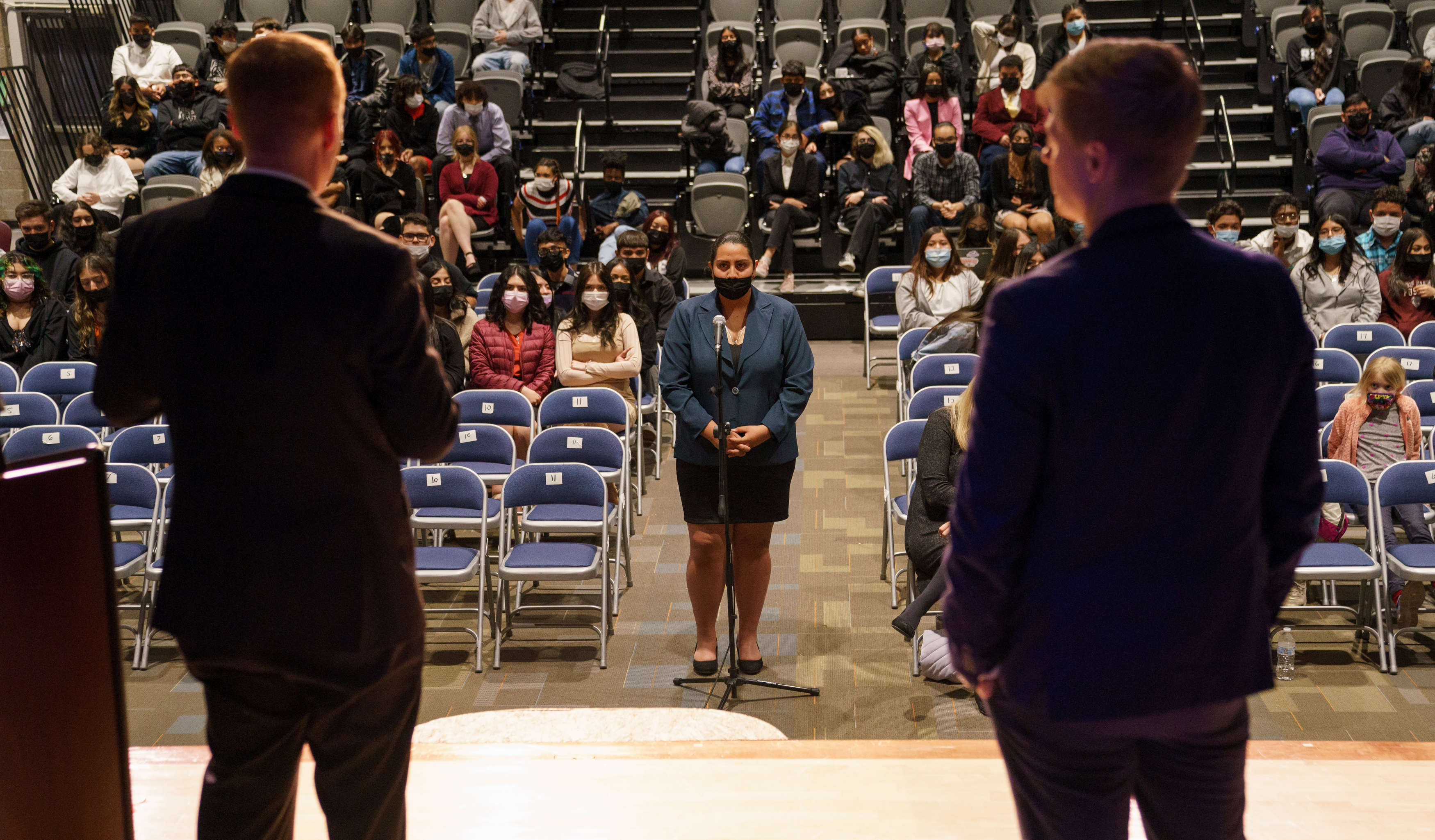
Does it matter?
Whether the race and gender of lawyers conducting oral arguments can affect the outcome of cases depends first on whether oral arguments themselves affect the outcome of cases. During an appellate conference panel last May, some judges voiced a belief that oral argument does matter.
“I think it almost always sharpens our opinion,” said Court of Appeals Judge Craig R. Welling. “In almost every case, our opinions in the Court of Appeals become better with the result of argument. Less commonly, outcomes change.”
Judge Stephanie Dunn, also of the appellate court, agreed with him, saying she could only recall one case where the outcome flipped based on the argument.
“It may change analysis, how we get there. And it does impact our opinions all the time,” she added.
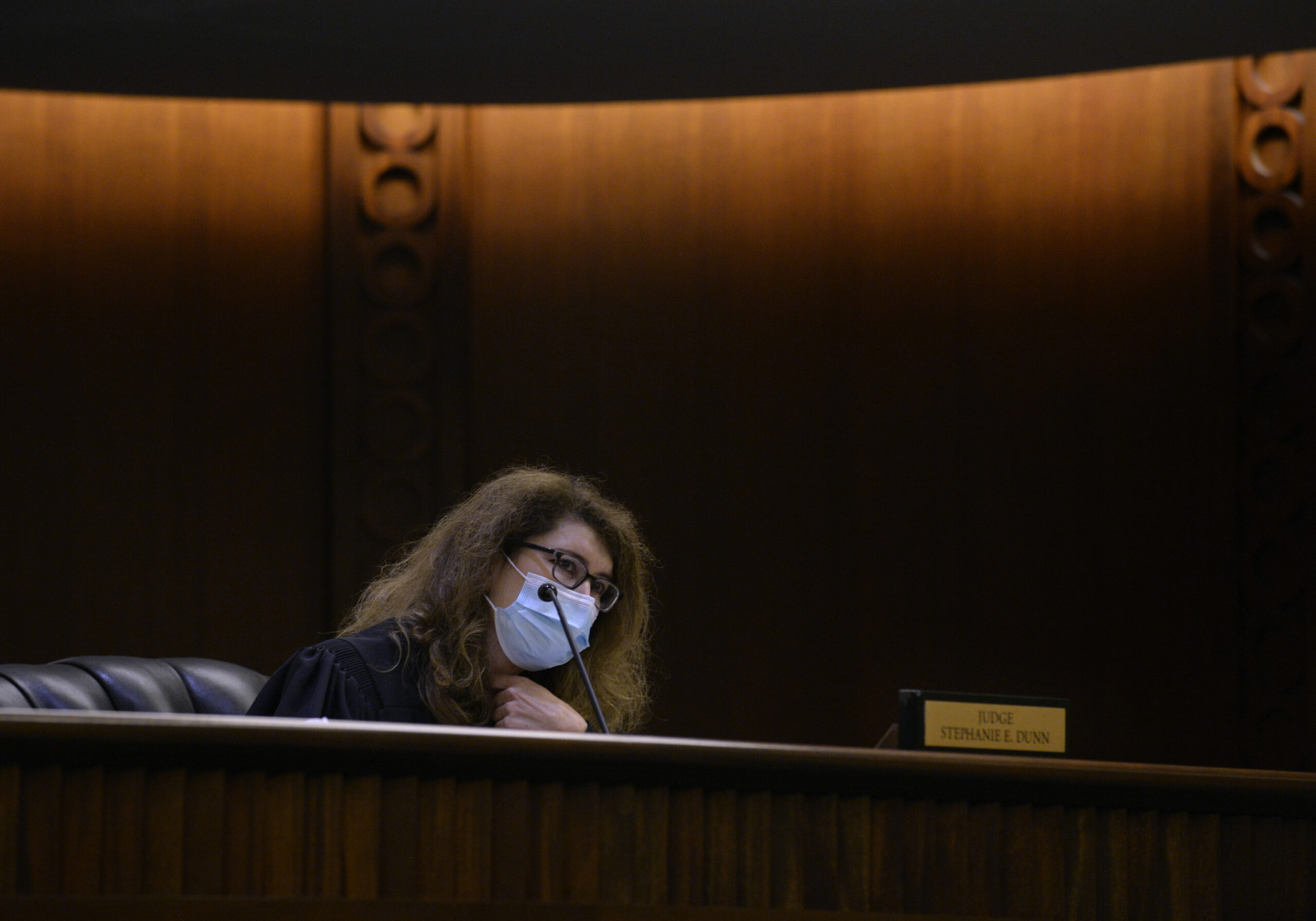
For the state Supreme Court, Justice Carlos A. Samour Jr. suggested that because the court often takes up difficult questions of law, oral argument has a real shot at influencing the case.
“It’s more often than most people think. A lot of questions that come before us are really close questions,” he said. “An effective oral argument can be the thing that pushes you over the fence.”
Beyond that, appellate lawyers held differing viewpoints on the significance of the race and gender of those arguing the cases. Some believed judges make better decisions when both they and the attorneys represent a cross-section of the community. If white and male lawyers handle the bulk of arguments, their innate perspectives may implicitly come across in their advocacy.
On the other hand, attorneys emphasized that oral argument is only one component of a case. The written briefs form the basis for the large majority of appellate decisions, and those may not convey the race of the attorney or even the client. Further, attorneys occasionally appear at the court in teams, with one delivering the argument and others being present, but silent. Colorado Politics did not account for those instances in its analysis.
Even if the race or gender of the arguing lawyers has an effect, some believed it manifests only under specific conditions.
“With regard to the case I was involved in, I truly don’t think the outcome would have been different regardless of gender or race of the attorneys, only because the law we were arguing about was pretty well-settled in this particular area,” said Gail L. Benson, who argued in a worker compensation case to the Court of Appeals.
Many attorneys, however, focused less on the effect of diversity to cases and more on the consequences to lawyers of color and women when they are underrepresented in the courtroom.
“Clients are missing out on talented attorneys of color and women who are not getting the opportunity to litigate at the appellate level,” said Luis Toro with the Boulder City Attorney’s Office.

Nationally, The Appellate Project is focused on getting attorneys of color into appellate work, including through mentoring. Juvaria Khan, the project’s founder and executive director, said that because many appellate judges come from the ranks of appellate lawyers, it is important for young lawyers to be able to see themselves belonging in those roles.
She raised the example of the Trump administration’s 2017 order that banned travelers from certain Muslim-majority countries, and the subsequent efforts to block the restrictions in court.
“I remember being struck that although the ruling would have an enormous and potentially devastating impact on millions of Muslims around the world, including my own loved ones, not a single Muslim judge would hear the case,” Khan said. “Similarly, there were almost no Muslim appellate lawyers leading the many important arguments before these judges.”

Efforts to diversify
Some of Colorado’s diversity bar associations offered suggestions for increasing the presence of lawyers of color and women. The Sam Cary Bar Association, a group for Black attorneys, said law schools should help prepare students of color for appellate work. The South Asian Bar Association pointed to diversifying the ranks of senior law firm attorneys, as they typically receive the opportunity to argue.
“We’ve heard women attorneys share stories of not getting to handle the oral argument even though they were the attorneys who primarily researched and wrote the briefs,” said Emma Garrison, president-elect of the Colorado Women’s Bar Association. “In addition to interfering with the professional development of women attorneys, this can significantly disadvantage the client.”
Leaders within two of the state’s largest law offices – the attorney general and public defender offices – agreed diversification within their ranks is a worthy goal. With the attorney general typically representing the government in criminal appeals and some civil cases, and public defenders frequently representing the criminally accused and convicted, many of their appellate attorneys are repeat players before the courts.
“The attorneys who argue before the state appellate courts should reflect the gender and racial composition of the community,” said Lawrence Pacheco, a spokesperson for Attorney General Phil Weiser. “Both in the criminal appeals section and across the department, we have increased racial diversity, and more than 50% of our attorneys are women.”
Pacheco also pointed to the office’s fellowship program for recent law school graduates, designed to give them experience handling cases on appeal. Of the five current participants, four are white women and one is a white man.
Both the attorney general and public defender offices tended to have a more diverse group of lawyers conducting oral arguments than the population as a whole. Forty-four percent of the attorney general’s lawyers were women and 20% were multiracial or racial minorities. In contrast, while 44% of public defenders arguing were also women or nonbinary, almost no attorneys of color represented the office.
The public defender’s union “believes that the composition of the defense bar and attorneys generally should reflect the populations we serve. Obviously, we have a long way to go in our JEDI (justice, equity, diversity and inclusion) efforts as a society and as a public defense system to reach that goal,” said James Hardy on behalf of the Defenders Union of Colorado.
There is reason to believe the diversity of appellate attorneys will increase in the future. Apart from conscious efforts to diversify law firms, a 2021 report from the Office of Attorney Regulation Counsel documented that 64% of lawyers in Colorado 40 or older are male, compared with less than 50% of attorneys in the millennial age group. Younger attorneys are also slightly more racially diverse, according to results from a voluntary demographic survey.
Some lawyers have observed the demographic changes firsthand.
“A lot of attorneys joke about me getting favorable treatment in the courts, and not because of my race and gender but because of my nationality – British,” said Antony Noble. “During the past 10 years, whenever I have been recruiting associates, the majority of applicants are female, and three out of the four attorneys at my firm are female.”
Yet, others deemed the pace of change unacceptably slow, with the lack of diversity even imprinting upon those who argue. At least one attorney who fell into the dominant racial and gender categories found it memorable to be in a courtroom with all women.
“I remember that I commented to my wife after that hearing that, out of all the judges and attorneys arguing in the courtroom that day, I was the only male,” said Robert Scott, who argued a civil case before the Court of Appeals last May. “I live in a household of women, so it was notable to me and interesting to realize that that was the first time I’d had that experience, whereas most female attorneys have probably been the only female in the room many times.”
